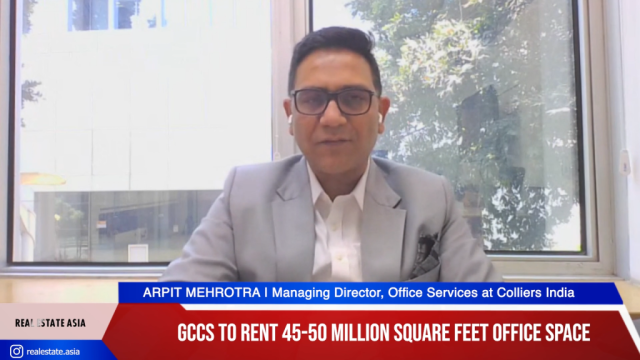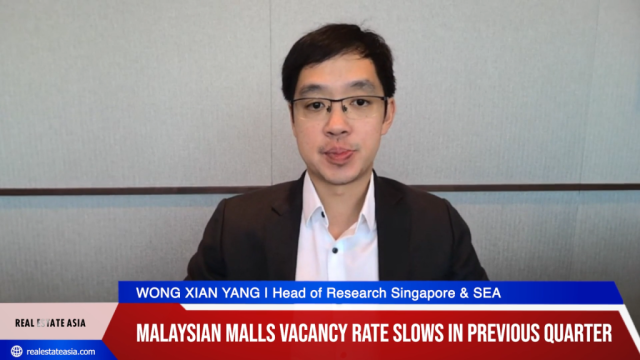
Fears loom over Tokyo’s future office supply and secondary vacancy
Secondary vacancy from last year’s supply is likely to materialise later this year as office demand weakens.
In a recent report, Savills notes that until recently, competition for new office space was so fierce that buildings would often be fully leased long before completion. For this reason, the office market had fared better than expected, despite looming concerns over the significant levels of supply in 2018 and 2020. Needless to say, the COVID-19 outbreak in early 2020 has clouded the sector’s previously optimistic prospects, and this is reflected in both Grade A office vacancy rates and rents in the C5W. For instance, the former saw a marked loosening from near zero to 1.2% as of Q1/2021.
Meanwhile, Savills reports that rents have declined 5.3% year-on-year (YoY) to JPY35,800 per tsubo per month over the same period. At the ward level, having notably outperformed its peers pre-pandemic, Shibuya bore the brunt of the pandemic as a result of its larger tenant pool of technology companies.
“Looking ahead, with office demand weakening, secondary vacancy derived from last year’s supply is likely to materialise later this year and may exacerbate the current situation. That said, the limited supply in 2021 and 2022 should provide a much-needed respite for the market, with both years expecting to see less than 30% of the supply in 2020.”

Here’s more from Savills:
Turning to specific developments expected in 2021, notable projects include Tokiwabashi Tower, the first phase of an even larger project which includes Torch Tower – expected to be Japan’s tallest office tower in 2027, and Hibiya Fort Tower. Somewhat impressively, these two projects alone will account for around 50% of the 130,000 tsubo of GFA that the C5W will see this year.
Next year, the largest project will be Tokyo Midtown Yaesu, the third Midtown project following Tokyo Midtown and Tokyo Midtown Hibiya. In fact, the Yaesu area is undergoing a complete overhaul, with multiple large-scale projects scheduled to be completed by 2030.
Following these two relatively quiet years, the next wave of large supply is expected in 2023. Interestingly, one notable characteristic of this influx is the high concentration of a small number of large-scale projects within the Toranomon submarket. Namely, the Toranomon Azabudai project and the tentatively named Toranomon Hills Station Tower by Mori Building, which will bring approximately 100,000 tsubo of NRA to the market in total. Whilst sizeable, there is plenty of appeal for these projects, especially given the past success of the redevelopment of Roppongi.
Indeed, the attraction of being in a city within a city and the immaculate local infrastructure that underpins the area are certainly some of the factors that may steal some of the limelight from other developments slated for 2023. In the same submarket, the business tower of the Toranomon 2-chome redevelopment project, which is being carried out by a consortium of six companies, will provide another 30,000 tsubo of NRA.
Considering that all these projects in Toranomon represent well over 10% of the ward’s overall office stock on an NRA basis, it clearly provides a sense of the scale of what is to come that year. As such, absorbing such a high level of office space in the same submarket simultaneously will not be an easy task, and the likely result will be a temporary softening of the market. Unsurprisingly, the reaction to this new supply has the potential to change the direction of the overall Tokyo office market moving forward. On top of Toranomon, Minato appears to have a packed schedule with other large single-building developments. Some of these may struggle especially when compared to the comprehensive developments in Toranomon.
Not wanting to be left out, another ward that will also see a large influx of supply in 2023 is Shibuya. However, it is not all good news with the ward at a delicate juncture. Looking at Shibuya before the onset of COVID-19, for instance, the ward seemed to have it all: vacancy levels were at rock-bottom, and rental growth comfortably outpaced its peers thanks to its newfound status as a hub for technology firms and start-ups.
Thus, any additional supply appeared welcome, and even necessary to relax its air-tight office vacancy. When the pandemic hit, however, these tenants were quick to adopt remote work arrangements, and the submarket quickly saw a notable weakening in demand. Against this backdrop, large-scale projects such as the Sakuragaoka District redevelopment – adding over 20,000 tsubo of NRA to the market, approximately 10% of Shibuya’s Grade A office stock – have the potential to disturb the delicate equilibrium between supply and demand at present.
Even so, over the longer term, the area maintains its strong appeal as a hub for the technology sector. And with the ever-growing calls for digital transformation (DX) in Japan acting as a tailwind for the sector, demand for office space should strengthen as a result. At the same time, there are also positives on the supply side. Here, Tokyu Land – a driving force behind Shibuya’s redevelopment – has been experimenting with flexible lease terms which should be particularly appealing to the fast-moving start-ups that the ward is trying to attract. Nonetheless, with plenty of uncertainties lingering, the sudden supply spike in 2023 could be worrisome.
Not only has there been an adjustment in the supply of offices over the past few years, but change is also afoot in the buildings themselves. Specifically, the increase in mixed use developments has brought additional foot traffic to the area, whilst also providing landlords with diversified streams of revenue.
A prime example of this is Tokyo Hibiya Midtown – completed in March 2018 – which welcomed around 22 million visitors, and with it, brought in nearly 16 billion yen in profits within its first year of opening. Elsewhere, another new development: Shibuya Scramble Square, welcomed nearly 6 million visitors in the first four months of its opening in November 2019.
With the appeal of these mixed-use offices clear to see, their adaptable and diverse tenant demand, where a flexible work style is more common, should be particularly well suited in the post-pandemic environment. Further emphasising this view is the fact that residential units in these areas have remained popular due to their prime urban locations. Impressively, according to the Real Estate Economic Institute, the average 23W Tokyo condominium price per sq m increased by 11% YoY in 2020.
Furthermore, this trend is unlikely to wane any time soon considering that the C5W has experienced some of the highest population growth over the last decade, whilst simultaneously boasting a greater ratio of workers working and living in the same ward compared to the other 18W. Indeed, the vibrancy that these mini communities could bring to the local area will certainly be of benefit to tenants and landlords alike, potentially boosting the value of the surrounding amenities.
To sum up, these major projects expected in 2023 should attract strong interest due to their favourable locations, state-of-the-art facilities and the mixed-use components that will supplement these developments. At rental levels that are reasonable enough to attract tenants to fill large floor plates, we believe these projects could capture expansion and relocation demand from tenants in older office buildings.
That said, concerns remain. In particular, the concentration of large supply in a certain area at the same time is likely to soften the market temporarily at the very least. A more imminent challenge for the Tokyo market could be the secondary vacancy derived from the large 2020 supply. As discussed in the later section, whether there will be sufficient demand to fill the gap should depend on how fast the economy is able to recover.























 Advertise
Advertise








